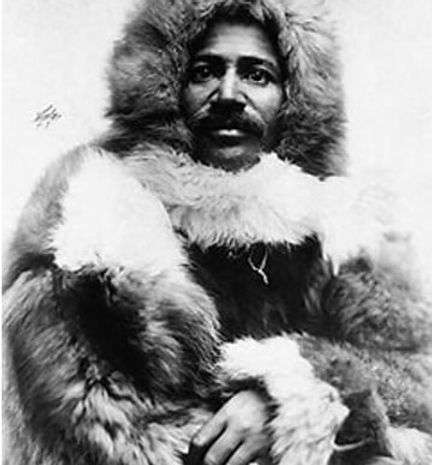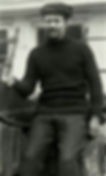
HUNTERSLIKEUS
Dedicated to the Sable Woodsman
OUR PHOTOS THROUGH THE YEARS

Matthew Henson
Breaking the Ice in History
Born in Maryland in 1866, Matthew Henson lost his parents young and sailed the world by age 12. His exceptional hunting and outdoor skills, often overlooked, earned him deep respect among the Inuit, who named him Mahri-Pahluk, meaning Matthew the Kind One. This article explores only a fraction of his vital role in Arctic exploration
Dressing for Survival
Matthew Henson’s legacy as an Arctic explorer is inseparable from his mastery as a hunter. His survival and leadership in the polar north were built not on bravado, but on deep respect for Inuit knowledge and a relentless commitment to learning the land. When Henson first traveled north with Robert Peary, he quickly realized that success depended on adaptation. He traded heavy wool for sealskin and caribou hides, which offered superior insulation and wind protection. He learned to move without sweating—moisture could be deadly in subzero temperatures. His sleds carried only essentials: food, tools, spare mitts, and repair materials. In the Arctic, gear wasn’t just equipment—it was life insurance.


The Art of the Hunt
Hunting became both a science and a spiritual discipline. Henson joined Inuit hunters at seal breathing holes (aglu), waiting in silence for hours, reading the wind and listening for faint crackles beneath the ice. A seal’s brief surfacing demanded a clean, precise strike. On the floe edge, walrus hunts required coordination and strength—lines ready, dogs calm, and every hand steady against the pull of a wounded giant.
Facing the Polar Bear
Polar bear hunting added another layer of danger and skill. These apex predators were unpredictable and powerful. Inuit hunters taught Henson to track them across snowfields, reading paw prints and scat, and to approach with caution. A successful hunt required teamwork and nerve—one misstep could be fatal. Polar bear fur, prized for its warmth, was used in mittens and clothing, including a pair crafted for Henson by an Inuit woman that helped protect his hands during brutal expeditions.


Master of the Trail
Henson’s judgment on the trail was as sharp as his tools. He drove dog teams across pressure ridges and thin ice, choosing routes by sound and color—the gray tone of weak ice, the hollow thud of hidden cracks, the blue glint of old, strong floes. He knew when to turn back, when to bridge a lead with a sled, and when to wait for the cold to seal a path.
Camp Life and Craftsmanship
In camp, Henson built snow houses with tight spiral roofs, lit by seal oil lamps. He mended sleds, sharpened tools, and cooked simple meals—pemmican, tea, and fresh meat when possible.


A Legacy of Respect
But his greatest strength was his humility. He honored Inuit wisdom not just by using it, but by teaching it. In the silence of the Arctic, Henson became not just a traveler, but a true hunter—steady, skilled, and deeply connected to the land and its people.

Did You Know? Hunters Fund Conservation.
Over 60% of wildlife conservation funding in the U.S. comes directly from hunters through licenses, permits, and excise taxes on hunting gear. Far from just sport, responsible hunting supports ecosystems, controls overpopulation, and protects endangered habitats.
At Hunters Like Us, we stand with those who hunt with purpose — not just for the thrill, but for the future.
Get in Touch


